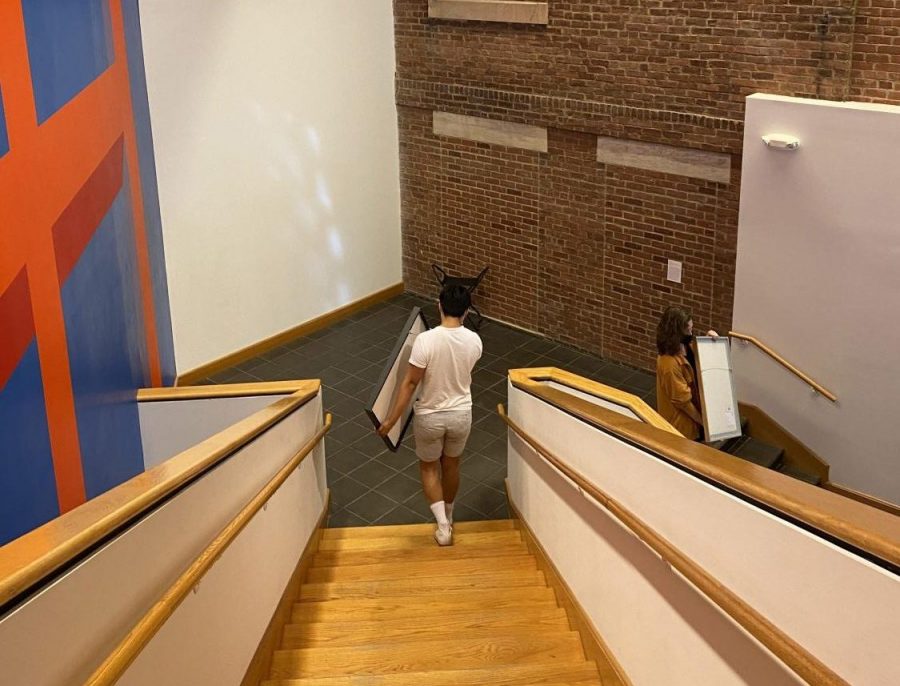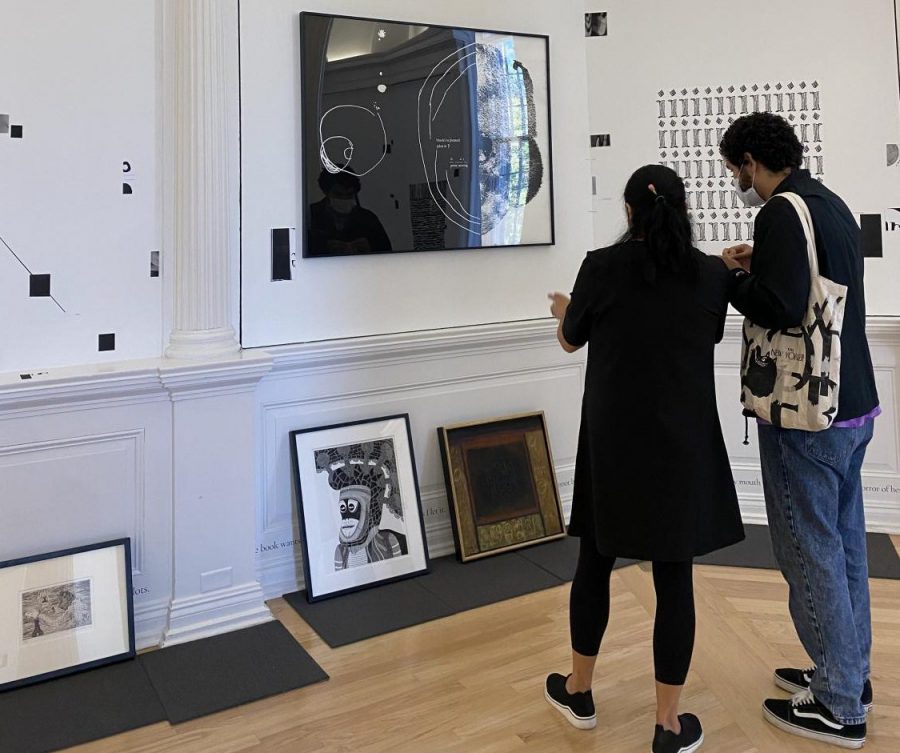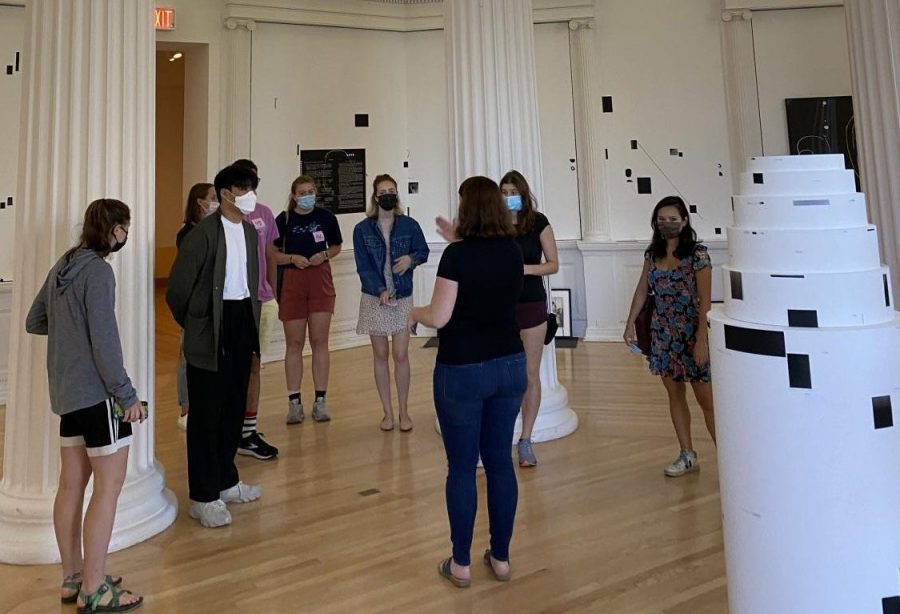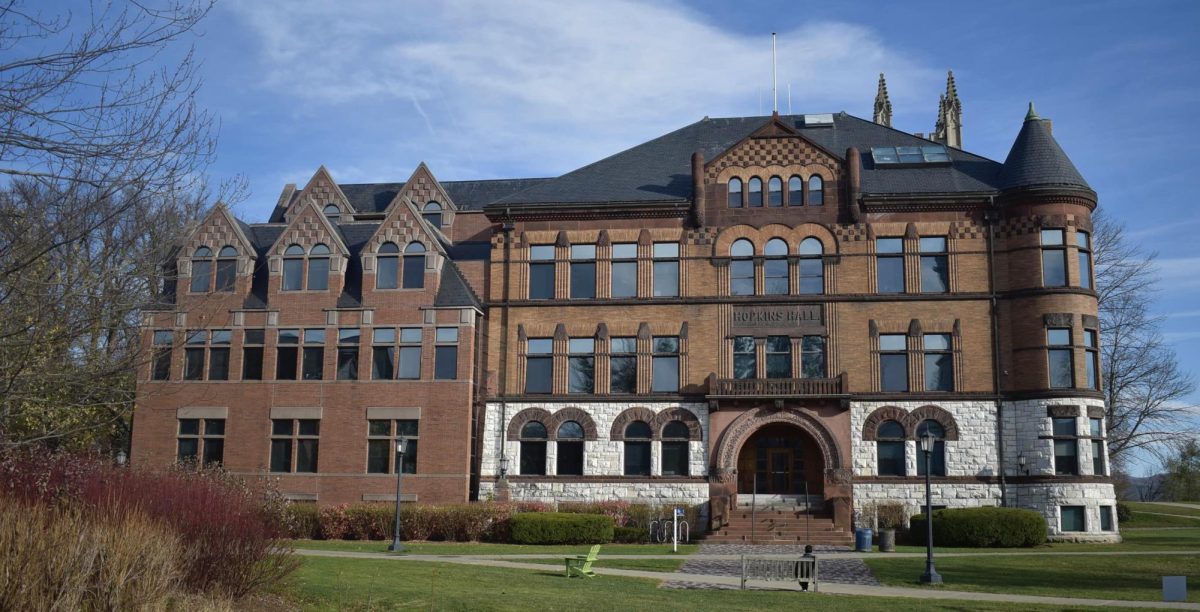WALLS returns after COVID hiatus; students express mixed feelings
September 22, 2021

Williams Art Loan for Living Spaces (WALLS), returned on Sept. 14 after a year-long hiatus due to the COVID-19 pandemic. While many celebrated its return, an unprecedented high number of signups this year and consequent technical glitches led others to express disappointment with both the new allocation process and the long-awaited return of the program.
Launched in 2012 and run by the Williams College Museum of Art (WCMA), WALLS offers students the opportunity to decorate their rooms with original works of art produced by world-renowned artists, such as Marc Chagall and Alexander Calder. It quickly became a beloved tradition among students at the College. In a regular year, many students, excited to pick out their favorite pieces from the program collection, camp outside the museum entrance through the night until the doors opened in the morning. This year, WCMA updated the process to assign time slots based on a Google Form sign-up.
The earlier a student submitted the form once it was open, the earlier their visit time and the more works of art they could choose from. The first 113 students to fill out the form were able to get art, and the rest were waitlisted. In the 10 minutes after it went live around 8 p.m., 447 students rushed to fill the form. However, a glitch sent confirmation emails to the waitlisted students as well, resulting in widespread disappointment once WCMA identified the issue and sent an apology note correcting the misunderstanding. As a token of appreciation for their interest, WCMA promised the 334 students on the waitlist posters based on the WALLS collection. Moreover, the form actually went live a few minutes before 8, so students who were on the form when it was supposed to open-ended up getting a later number.
“I knew [the slot confirmation] was too good to be true. Then, my friend wrote in the group, ‘The form opened a few minutes before 8,’ and I went, ‘Wait, what?’” Wilson Lam ’22 said, who was waitlisted shortly after receiving a confirmation. Speaking of a similar experience, Celeste Murillo ’24, who hadn’t done WALLS before, encapsulated her WALLS experience in one word: “Frustrating.”
WCMA’s Deputy Director for Engagement and Curator of Education Christina Yang cited COVID concerns as the main reason for introducing the new online first-come, first-served system.
“Even Maud [Mandel] told our director, Pam [Franks], ‘I think it’s a good idea that we don’t have like, 50 people sleeping outdoors and then, be in a rush to come in.’[…] It’s only because of the pandemic that we’re doing it this way,” Yang said in an interview with the Record before pick-up day.

WCMA was closed to the public between March 2020 and July 2021, a period Yang described as a “hard, hard time for [the museum]” spent assessing college, state, and national COVID guidelines. “Knowing the excitement of students, especially in the fall, who would want to sleep out on a warm night, we wanted to find a way to stick to the key goal of the program which is to bring art into their lives but not run the risk of a superspreader event or something.”
In Yang’s view, the new system merely transferred the camping-out tradition to a digital dimension.
“The form did go up before 8 […] just so there was time to troubleshoot it,” said Yang, confirming reports of the form going live earlier than 8 p.m.. “The students that were in line ready early the same way the students who [slept] over, were the ones who got in,” she said.
Yang said that the volume of submissions and Google Form’s capacity to process them were to blame for the glitch. “Google needs 0.03 seconds to send a response, and there were [so] many students that were logging on that Google got stuck in its own loop.”
Despite the glitch, Yuchan Kim ’24 was one of the few lucky students who were able to secure a slot in the program through the online sign-up this year — but he was also willing to struggle with the elements had the old system been implemented. “I was very much prepared to camp outside WCMA for a while,” he told the Record last Thursday.
To others, the camping tradition set an intimidating precedent. The increased accessibility of the online sign-ups was welcomed by some students, such as Sophie Goldstein ’23, who might not have participated in WALLS otherwise.
“I’ve never done WALLS before, so I appreciated the Google Form because I don’t know if I’d have the will to camp out,” Goldstein said on pick-up day, beaming while holding up her chosen painting, the mannerist Banquet At the House of Tarquinius by Hendrik Goltzius.
Some students who did have the will to camp out didn’t get art, however. “Personally, I didn’t get art, and it wasn’t the end of the world, but I know there were many people who were very sad about the whole thing and who would have definitely camped out,” said Murillo, who was waitlisted after receiving a confirmation on the night the form went live.
“I think there’s a big difference in having to wake up early, wait in line, and then go for the painting — and just signing a form,” she added.
Indeed, WCMA confirmed that some students with confirmed slots did not show up to the museum on pick-up day — including the student with the highest pick number.
Annie Miklas ‘23, who has camped out for WALLS twice before, shared Murillo’s sentiments about the shortcomings of the Google Form. Despite being successful in the lottery this year, she was vexed by the new system. For Miklas, who has worked at WCMA in the past, WALLS was more than just a quick trip to Lawrence Hall; it was about community, dedication, and breaking through the ivory tower of high art.
“There’s a lot of things at Williams I feel like I don’t deserve,” she said on Sunday night. “But I feel like [the Google Form] converted this great art experience of community and waiting and delayed gratification to, ‘Oh, I’m picking my materials.’ Like, it’s a privilege regardless, but when I [wait] overnight for it, I feel like I’m in communication with the art and you know, there’s a small amount of sacrifice in it. I feel more undeserving of my art now.”
The question of WALLS’ accessibility is a complex one for students. “I think there are certain activities that are inaccessible in their nature [but] they should not be eliminated because of that,” Miklas said. “I don’t take that [accessibility] lightly but… in this mode of accessibility that they’ve created, it’s barely the same program so it just doesn’t work.”
Miklas also pointed to the inconsistency between College COVID guidelines and the WCMA decision. With more than 98 percent of students fully vaccinated and significant data showing COVID transmission rates are substantially lower outdoors, the College has no limits on outdoor gathering sizes.
“Camping outside can be really spaced out, and it always has been, just because people are socially awkward,” Miklas said. “ They can extend us all the way to Currier, so I don’t understand why [COVID concerns] would be a part of it.”

Others saw the merit in being cautious.
“All in all, I very much appreciate the online lottery,” Kim said. “I think it’s a much more effective and healthy way to deal with it.”
Yet, students are not the only ones considering big changes to the signature program moving into the future.
Within WCMA, the long-term conversation about expanding the WALLS collection — thereby making it available to more students — was newly revitalized after the Tuesday sign-up. “Of the 447 students signed up, if 250 show up, that’s actually twice as many people as we would usually have show up,” said Yang. “We have something to think about [it] in terms of how big the collection can get… We didn’t have that data before [this fall], and this data, at least, has shown us that the students will show up.”
As with most programs returning from a COVID hiatus, discussion surrounding changes made to this year’s rendition of WALLS will likely persist among both students and WCMA staff. Already, some students have reached out to the museum with feedback about this year’s WALLS.
“All the staff at WCMA are wonderful, so it’s just a bummer,” said Miklas. “Because I’m such an avid supporter of the museum, I hope that this doesn’t sound like complaining and that it sounds more like ‘We care about the museum’ and ‘We love you!’ so ‘Please don’t ruin this!’”







